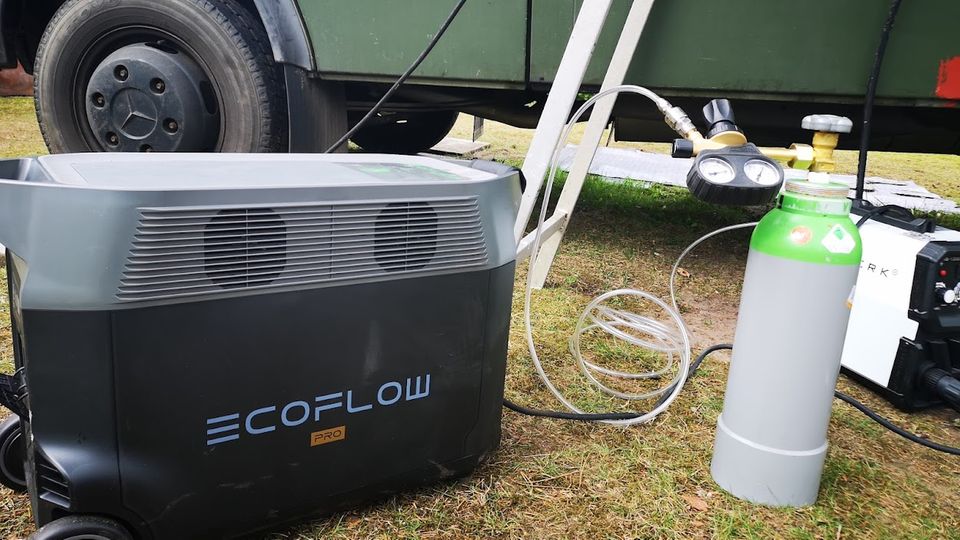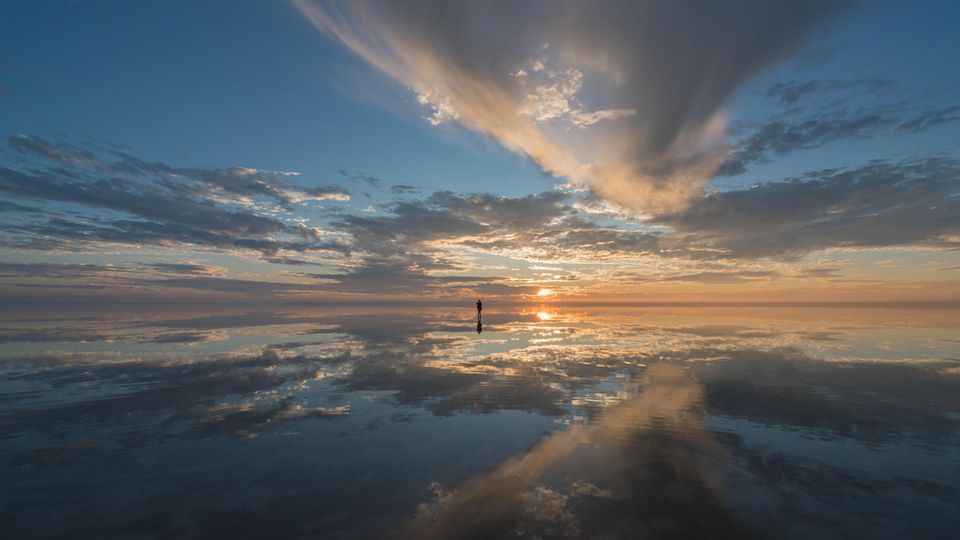practice test
camping cool
Ecoflow Wave 2 – what good is the mobile air conditioner that runs on battery and solar panel?
In the picture you can see quite well how big the device actually is.
© Ecoflow / PR
Ecoflow launches the second generation of a camping climate box. Technically, but also in terms of price, the device is a hammer – it makes sense if you supply the system with a solar panel.
Ecoflow’s Wave 2 is an air conditioner to go – coming this spring in its second generation. And is one of the products with which Ecoflow is expanding its portfolio. The company has grown with quite outstanding power boxes, they were supplemented by solar panels and then by a modular power system for larger stand-alone solutions. Now products are being added, all of which are mobile and can be operated with batteries.
So does this climate box. First question: for whom could this be the right device? Compared to a simple monoblock system from the hardware store, the Wave 2 is expensive. Without the battery, it costs 1199 euros. Way too much to try once.
The range of applications must be right
The device can cool down a medium-sized room with 5000 BTU. Isolation plays a role in this. The Wave 2 is economical in consumption and does not depend on mains power and that is the point. It will soon run out of breath with its own battery alone, but it can be operated via another power box or better: via a solar panel. With a large 400 watt solar panel or a corresponding solar bag, the climate box works almost autonomously in summer and can produce pleasant coolness for weeks. You can use the Ecoflow panels, but you don’t have to. External companies can also be connected. The advertising then also shows the use in the tent, in the camper or in the caravan. But of course a small hut or a construction site could also be tempered. Not to be underestimated is the use by truckers, they get air conditioning during long periods of standstill without the engine running.
What to do with the hoses?
So there is a need. As usual from Ecoflow, the Wave 2 looks very stylish, so even in a well-kept home it does not stand out in an unpleasant way. With a weight of 14.6 kilograms and dimensions of 518 x 297 x 336 millimeters, the climate box is no lightweight. So mobile means: transport by car. For a mini camper, the device is quite bulky. Compared to its predecessor, it is at least 20 percent smaller with 27 percent more power. And indeed, the device is very compact for its cooling capacity of 5000 BTU. With 5000 BTU, the Glacier is about twice as powerful as other portable air conditioners for camping. If necessary, the box also heats up with 1800 watts, but that’s just an additional function. If you want to heat as a priority, you will also be happy with a fan heater for 50 euros.
The joy of design is clouded by huge air hoses. Through them, the box sucks in outside air and flushes exhaust air out again. As with all air conditioners, the Wave 2 requires access to the outside. It is designed as a monobloc and not as a split device – that means: all the technology is in one box.
Laying the hoses in a tent is very easy. In a wooden hut you can saw two holes through the wall, but in many places a window must be half open for the hoses to run through. Then the gap must also be closed by a screen. If you use the device for a long time, you should make an effort here. Build a nice screen and then find a stand without leaving too much pipe inside. Improvised solutions with ceilings as in the test look very unfamiliar.
Operation only with solar and battery
The box itself draws unusually little power compared to the cooling capacity. Consumption is further minimized when AC power is not used and conversion losses are low. A first practical test took place in the cold Hamburg spring, so it is only of limited significance. We’ll add that in midsummer. In any case, the box is able to ruthlessly cool down a heated room. Ecoflow states that it can cool 10 cubic meters by ten degrees in just five minutes. The device is easily audible when working under load, but the noise is bearable. The values are 56 dB in normal operation and 46 dB in night mode. The device can cool a 10 cubic meter room for eight hours with its own battery of 1159 watt hours – in smart mode and not in continuous operation.
In combination with a solar panel, you can run the box around the clock. In the Wave 2 there is no condensation that has to be thrown away regularly. The water is transported away with the exhaust air. With special cables (not included in the scope of delivery), Ecoflow’s power boxes can be connected via direct current. You can also operate the box at 230 volts, so the battery is charged with a maximum of 800 watts. Solar power goes up to 400 watts and gets into the box via an XT60 connector. Similarly, the XT60 port can be fed from a car socket. In this mode, it can handle up to 200 watts, but only about 120 watts are provided in a 12-volt vehicle (car). Like all Ecoflow devices, the Wave 2 can be controlled via an app, so the firmware is also updated. However, the device also works without an app.
Conclusion
The Wave 2 keeps what it promises. The biggest drawback are the air hoses, which are due to the design, but without them there is no air conditioning. We really liked the modularity. If you already have a power box or a mobile solar panel, you can easily combine them. The other devices do not have to be from Ecoflow. A hut or a larger tent can be kept cool with the box plus panel without any climate-damaging emissions. The box will usually be too big for a camper, for ours with a “living space length” of 3.2 meters anyway. But where there is a will, there is a way. With XXL mobile homes and a truck, the size fits anyway. As already mentioned, the device is not cheap. For two hot camping weekends a year, it would be too expensive for us and the effort too great. You have to use the connectivity to power boxes and panels, if the device is only connected to the 230 volt network, there are far cheaper alternatives.
The situation is different if you use it to cool down a caravan or a container office on the construction site for the entire season. The mobility of the Glacier 2 makes it possible to use it at different locations. At the weekend you could cool the hut by the lake, and then the home office during the week. With such constellations, the Wave 2 makes sense. It gets really cool when the Wave 2 is solar powered. A rigid 400 watt panel is sufficient for operation. There is something like that for less than 200 euros. With a panel on the balcony and terrace, you can consistently keep a room cool at home. We were only able to test this to a limited extent in practice at an outside temperature of 10 degrees. To cool it is enough to open the window, in summer there is more.




